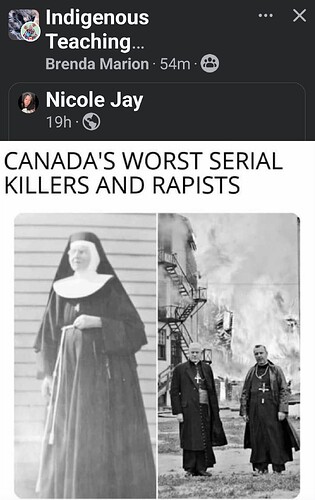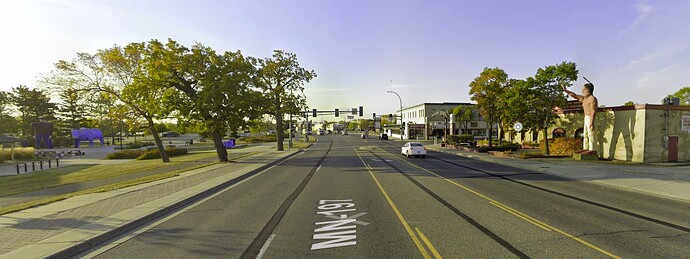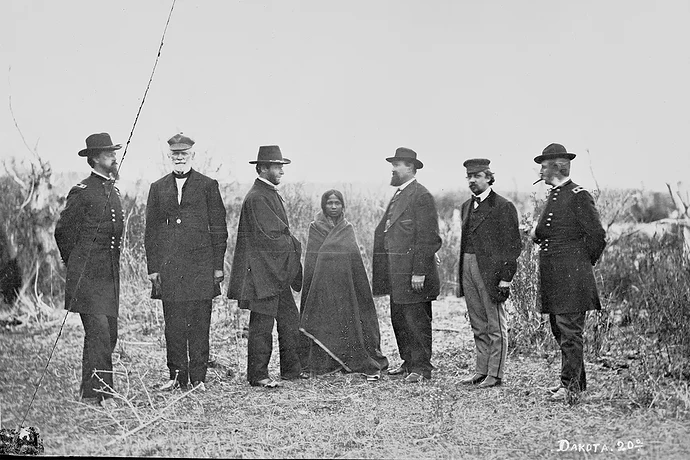I had relatives, contemporaries of my grandmother’s, who only spoke Scots Gaelic; no English.
There are programs in Toronto, through the school board, the University of Toronto and First Nations cultural centres where people can learn First Nations languages.
That’s so great! There is a statue of Nanabozho across the street from the Paul Bunyan statue on Lake Bemidji, waving goodbye? According to wikipedia, Nanabozho also ripped off PB’s beard after the fight, and that’s why this statue is beardless.
I’m sure some DOGE chucklefuck took great joy in disappearing the report from the Not Invisible Act Commission.
Illinois returns stolen land to Prairie Band Potawatomi Nation
The Prairie Land Potawatomi Nation has reclaimed land in Illinois that was promised to the tribe’s leader 175 years ago but stolen by the federal government 20 years later
“We are proud to once again call this land home,” said Joseph “Zeke” Rupnick, chairman of the Prairie Band Potawatomi Nation based in Mayetta, Kansas.
It’s not entirely the same soil that the U.S. took from Chief Shab-eh-nay. The boundaries of his original 1,280-acre (518-hectare) reservation now encompass hundreds of acres of privately owned land, a golf course and county forest preserve. Returning the original land would undoubtedly put the transfer into an interminable legal wrangle.
“This moment reflects the power of collaboration and the shared desire to build a future rooted in justice and respect," Rupnick said. “Illinois has shown true courage and vision by leading the way in the Land Back movement, demonstrating that healing and reconciliation are possible.”
The land will stay open to the public as a park, with the state providing maintenance.
That’s incredibly generous of him. Although perhaps also pragmatic.
Yeah, it’s not even the actual stolen land. It’s a popular park that they’ve agreed to maintain (although they may build a hotel there).
Today id the Day of the Indigenous People in Brazil. Here are some Indigenous cartoons for your apreciation:
Smithsonian article about this book:
The Girl in the Middle: A Recovered History of the American West by Martha A. Sandweiss
When a Historian Saw This Haunting Photograph of a Nameless Native Girl, She Decided She Had to Identify Her
In 1868, Sophie Mousseau was photographed at Fort Laramie alongside six white Army officers. But her identity—and her life story—remained unknown for more than a century
Great stuff. (And at first I thought, Girl? She looks like she’s at least 30 years old! I suppose a hard life will do that to a person.)
She had 13 children!
Indeed, she was born of violence. Thirteen years before the photograph was made, Harney, the general who stands with Sophie in the photograph, attacked a Lakota village at a place called Blue Water Creek in western Nebraska. His men wounded a young mother named Yellow Woman and used her infant for target practice. Then they rounded her up and marched her to Fort Laramie. At the same time, Harney ordered all the traders in the area into the fort. There, Yellow Woman met the trader Magloire Alexis Mousseau, who later went by the name M.A. They married, became Sophie’s parents and stayed married for over half a century. The general was an accidental matchmaker.
When Sophie’s parents ushered her into Gardner’s photograph, they saw two men they knew: Harney, whom they’d met more than a decade earlier, and Sanborn, whom they’d just hired as their attorney. Sophie and her family had their place in a West that was both a big place and a small world.
She was no older than 13.
Sounds about right.
Before the white smoke rose in Rome, Robert Francis Prevost spent years in Peru, walking among Indigenous peoples in the Andes. He was a missionary there — a man of the Church bringing his teachings into communities that already had their own ways of praying, healing, and knowing the land. Some say he offered education and support. Others know the weight that always follows when priests arrive with crosses in one hand and promises in the other.
He is no stranger to our communities — not by name, but by role.
A missionary.
To many of our ancestors, that meant more than faith. It meant the dismantling of language, the replacing of ceremony, the burning of sacred objects.But this Pope, like the one before him, speaks of bridges.
He says he wants to walk with the poor. To reach those forgotten.
He says he respects the work of Pope Francis, who came to our lands, apologized for the Church’s role in the genocide of residential schools, and asked for forgiveness — even if the Doctrine of Discovery still hangs like a ghost in Vatican vaults.Pope Leo XIV brings with him the promise of continuity — to build on what was started.
But we do not need continuation. We need transformation.We need a Pope who will not just visit our territories, but return what was taken.
We need more than apologies — we need the Vatican to rescind the very doctrines that declared our lands empty and our lives disposable.
We need our languages supported, our spiritual leaders respected, our sovereignty recognized — not just in words, but in deeds.If Pope Leo is truly listening, then let him hear this:
We are still here.
We have our own ways.
We are not seeking salvation — we are seeking respect, justice, and the restoration of what was stolen in the name of Christ.If he is to walk beside us, he must come not as a teacher, but as a guest.
Not as a savior, but as a learner.Let the bridge he builds be made of truths finally spoken —
and foundations set not in Rome,
but in the lands where our ancestors still whisper to us through the trees.Tapwe,
Kanipawit Maskwa
John Gonzalez
Standing Bear Network









